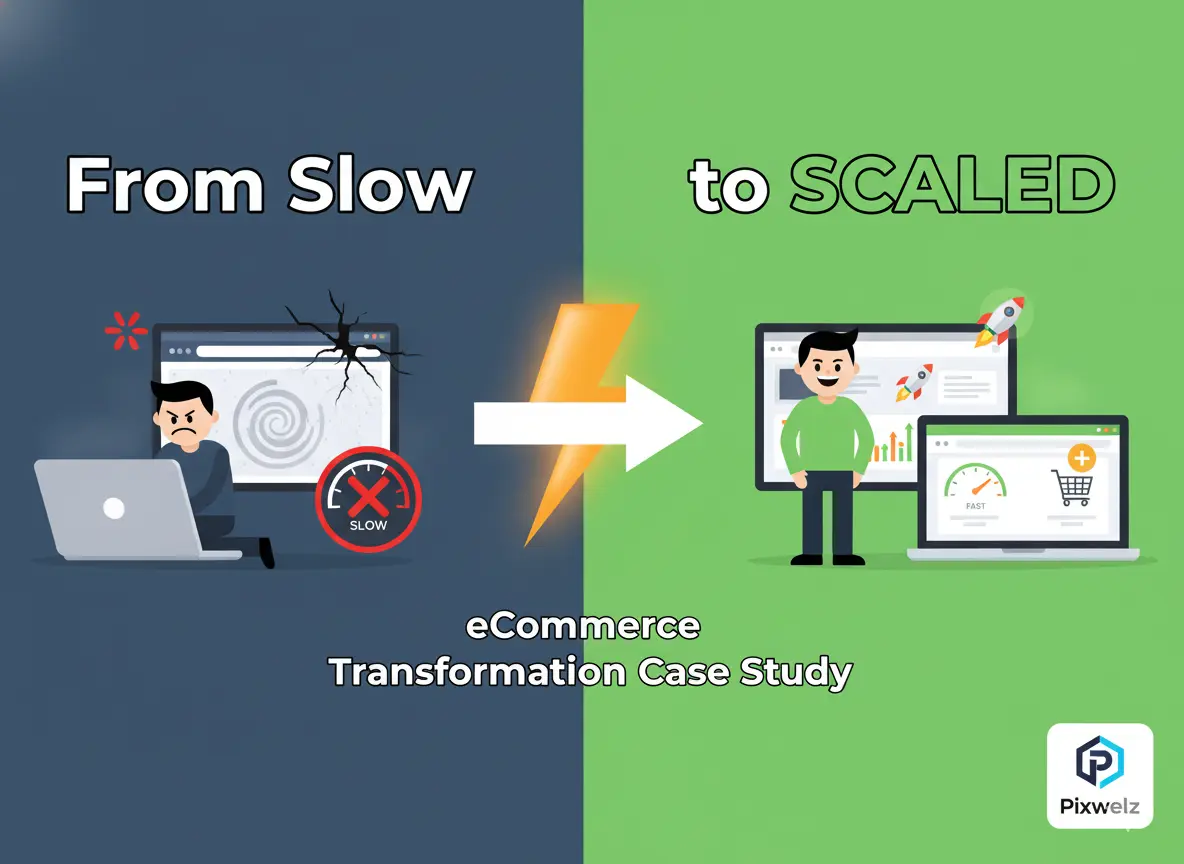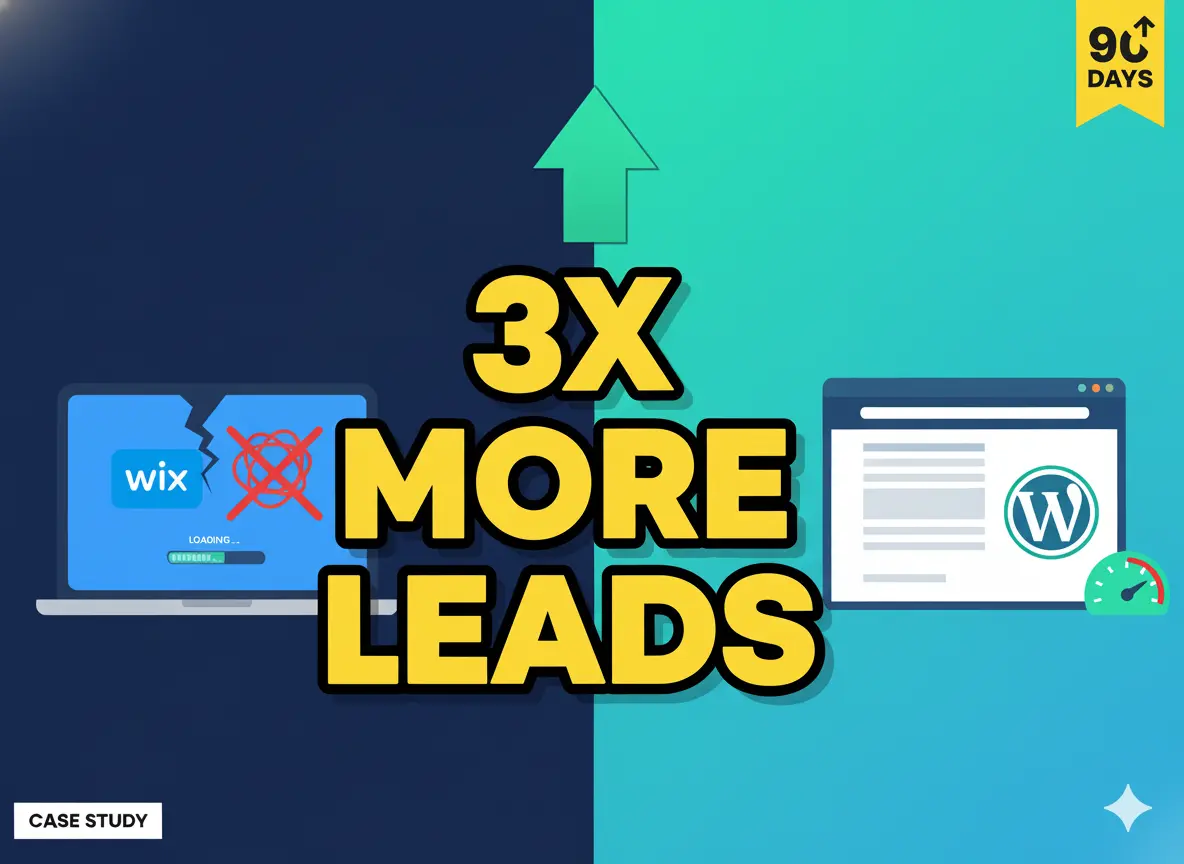
A staggering 88% of online consumers are unlikely to revisit a website after experiencing poor user interface navigation. Did you know this? That is where UX researchers come in. They are the unappreciated guardians who ensure products are adequately tailored and designed for users. There’s a sharp increase in demand for skilled UX researchers as more businesses adopt user-centric models.
We will analyze what it takes to become a UX researcher, the tools they use, and why their work matters in contemporary society’s digital world. This guide will walk you through everything, whether you want to pursue a career in UX research or you are simply inquisitive about the field.
The Role of a UX Researcher
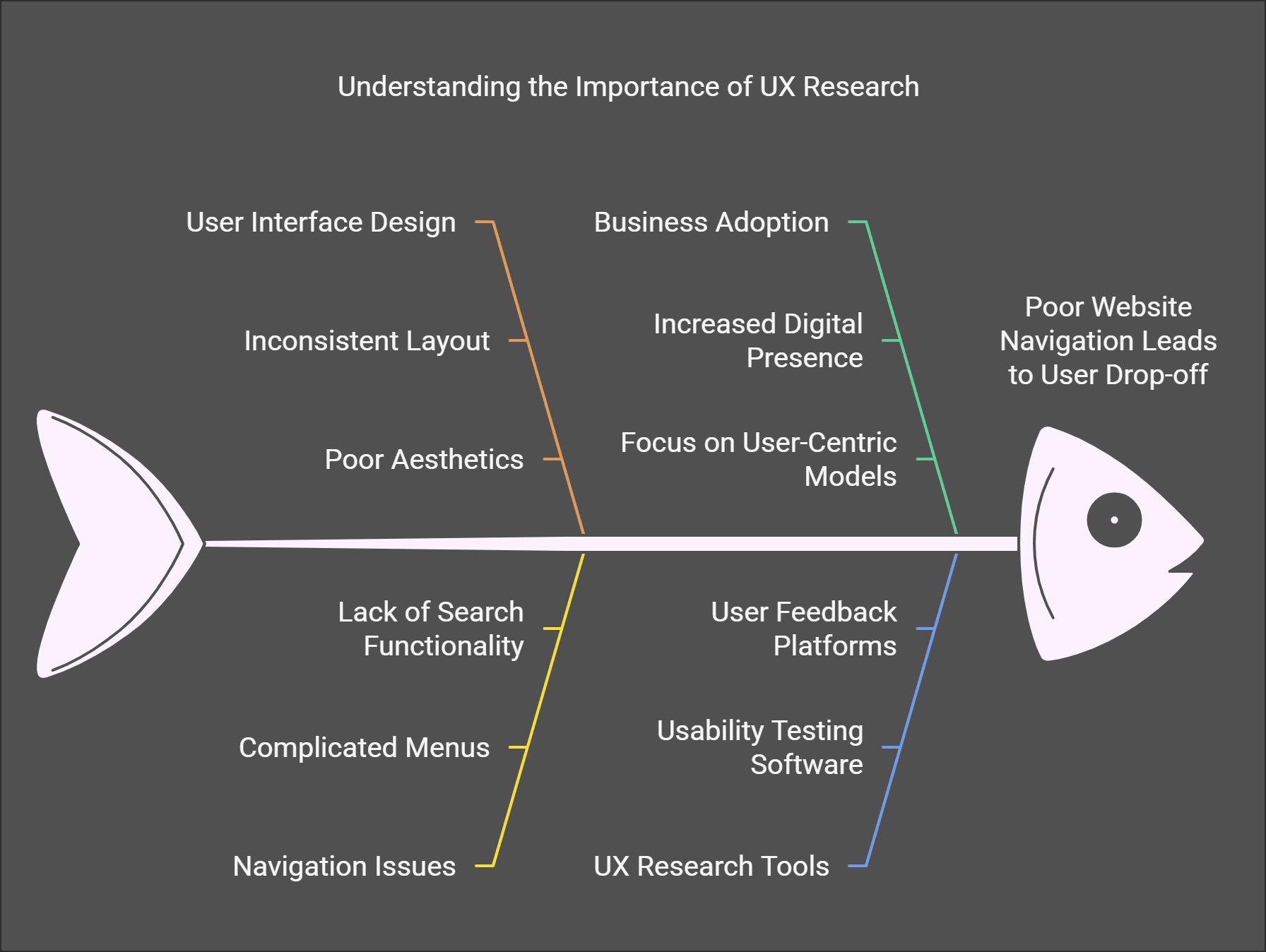
Now, let us jump straight into it. Honestly, I didn’t always know what a UX researcher worked on. It sounds like someone who asks users how they feel about something and calls it a day, which is quite an oversimplification. Contrary to popular belief, I was dead wrong.
A few years back, I was working on a project where we were building an app targeted at small business owners. In our heads, everything was perfectly set to go; the design was sleek, the app had great features, and, well, the list goes on. Oh, but when we launched? No one was using the thing the way we expected. After returning to earth, I realized we missed the most essential part of the project, actual users (yeah, that was quite the facepalm moment). This is where it struck me, UX researchers aren’t just “nice-to-haves.” They’re kinda the backbone of good design.
What exactly is a UX researcher? In short, they are the people who gather requirements from users before the design process begins. They can be compared to detectives, but instead of solving crimes, they solve usability problems. Their responsibility is to explore user interaction with a product, understand the challenges faced by potential users, and ensure these insights are incorporated into the final work. If you did not have them, you would likely build something that no one needs and, worse still, something so annoying that users abandon it in less than five seconds.
A while back, I had the opportunity to observe a UX researcher in the middle of a complete redesign project. She curiously conducted interviews, ran, and watched viewers interact with our legacy website. On some level, I thought she was going above and beyond. Does it make a difference if a user clicks twice on a button? But then her results were presented, shocking, to say the least. Enhancement of a more explicit call to action resulted in a 23% increase in conversions. From a single button change - mind blown, right?
Of course, that's not the complete profile. There is an equal amount, if not more focus, put on analyzing and translating actionable strategies from raw data. That's why a great UX researcher does not drop a bunch of spreadsheets onto your desk; they tell you a story. They design personas, and user journey maps that depict the rationale behind specific decisions and why they must be made. Let me share this from the bottom of my heart. If you are attending a meeting where there’s an argument over why stakeholders should prioritize empathetic user experience, you would want to have those visuals present.
Not every UX researcher has the same profile, though. Some focus more on qualitative research, like ethnographic interviews and observations, while others geek out on quantitative data from analytic tools. Either approach is super useful, but knowing which best fits a specific project is the first step toward saving time and avoiding future headaches.
One mistake I made early on was thinking that UX research was reserved for large teams or expensive projects. This is not the case. Even solo creators and startups can leverage basic research methods. Guerrilla testing snatching random folks off the street or from a café and asking them to try out your prototype is cost-effective and gets the job done. It's not flawless, but it helps you get honest feedback quickly.
A UX research is more than just a bridge to the user experience. Their work ensures that designers speak to users, and that is only after thoroughly understanding where they are coming from. For each click and scroll, there is a user behind the screen with their own goals, disappointments, and preferences. If a predictable outcome from excellent UX research is out there, you can be sure that missing out on it will be painful as it always has been. I assure you, I learned this the hard way.
Pro tip for non-advanced UX-focused entrepreneurs: Hotjar, for lack of a better example, will do just fine for new users. Go to forms and start collecting answers from users. Just set questions to capture, not filter, assumptions. That's why users will thank you, and your finances will blossom.
Primary Duties Of A UX Researcher

When I was new to UX research, I assumed it solely consisted of interviewing people to tell their preferences. I quickly discovered that I was wholly mistaken. There's a lot more in store. In case this is your career goal, or if it’s worth your while even just for curiosity’s sake, allow me to explain the most important responsibilities of a UX researcher through the eyes of someone who made all the mistakes and learned step by step.
As a part of my role, I conduct user interviews, surveys, and usability tests. It sounds easy. It’s far more complicated than simply asking questions and writing down answers. I recall creating an elaborate survey with 25 questions because I assumed everyone would provide insightful answers. Everyone makes a mistake at some point, users lose interest midway, and the data collected is no longer helpful.
Lesson learned: A sharper, more concise approach always works. Usability testing is a different monster. Witnessing users struggle with your product can be challenging, but finding those problems before launch is better.
Also critical to the role is analyzing information from qualitative and quantitative sources. Now, this is where the fun (and nerdy) part begins. Qualitative data like interviews or observations provide those powerful insights. When I was watching users complete tasks, they frequently ignored a step because they didn’t understand why it was there. Quantitative data is when people put numbers beside the insights, like analytics showing us that only 12% of users clicked or interacted with that feature. These two combined forms of data are what help create helpful recommendations.
Let’s not forget about collaboration. UX researchers don’t work in isolation; there is constant interaction with designers, developers, and product managers. I recall a project where I had to persuade a very set-in-their-ways developer that changing a button’s color would improve conversions. He did not accept my reasoning until I had to show him video footage of users hovering over the button and hesitating, saying, “Just change the color.” Sometimes, you have to show and not tell. Sure, collaboration has its hurdles, but the outcome is what matters.
And this is something many people are oblivious to; forming deliverables consumes a substantial percentage of our time. That includes developing personas, journey maps, and reports, among others. These are visually appealing and convey insights to stakeholders. There was a time when I painstakingly crafted a document to perfection, only for a manager to look at it and respond with, “That’s nice, but how does this contribute to sales”? This was a wake-up call to me. Moving forward, all my deliverables need to reinforce business objectives.
Lastly, a responsibility that doesn’t get enough credit is advocating for the user. You should be able to articulate the user's perspective in every meeting, brainstorming session, and even informal conversation. I often felt like a broken record, saying, “But have we asked the users?” And quite frankly, that level of determination tends to pay off. Products succeed because someone, somewhere, scratches and advocates for the user experience.
So yes, the UX researcher’s role comes with many caps: interviewer, analyst, collaborator, and advocate. It’s not easy, but it’s certainly fulfilling. Those contemplating entering this field, get ready because it’s a bumpy journey but impactful.
Key Skills Required For Ease As A UX Researcher
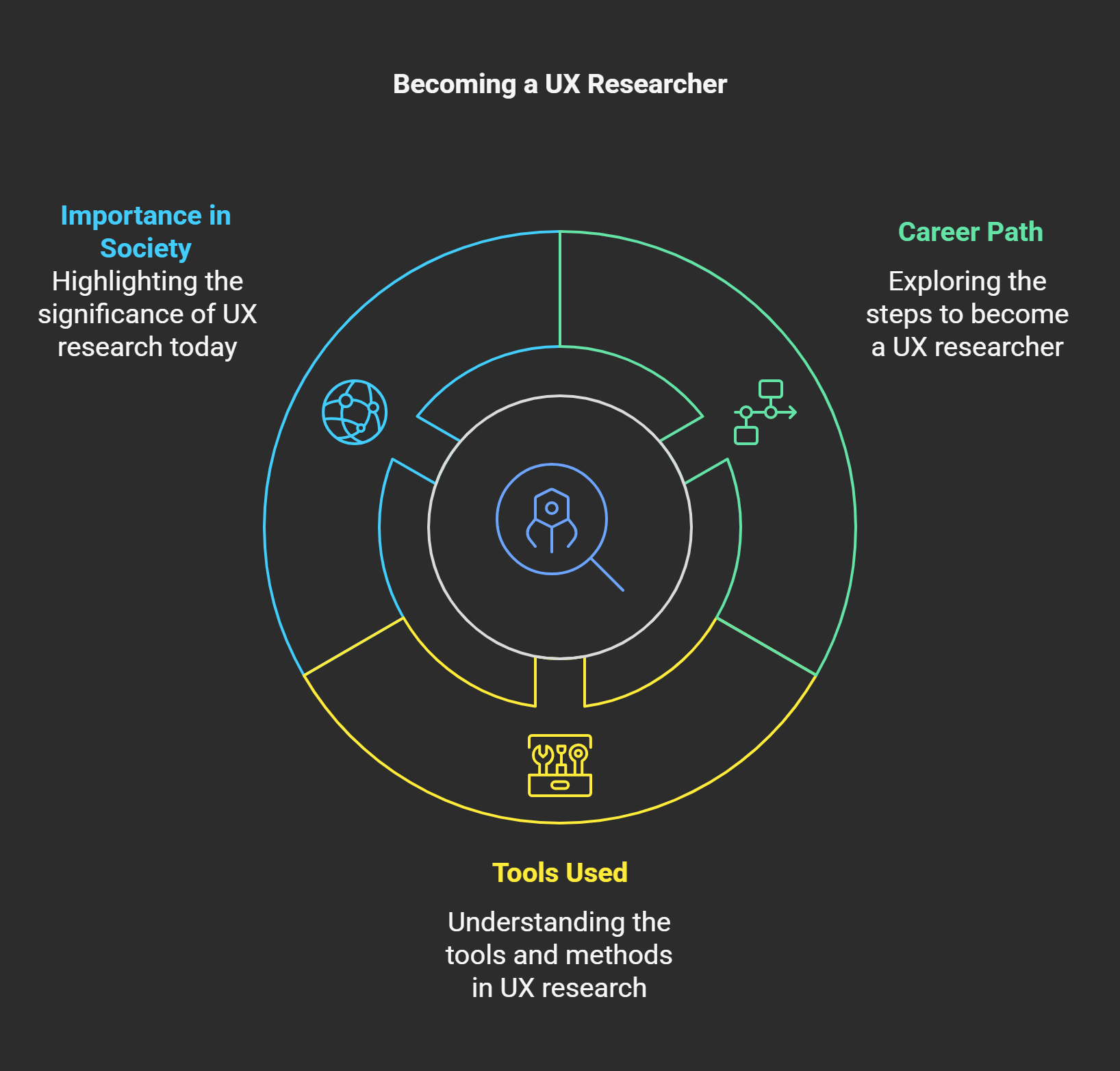
I can tell you that I didn’t always know what makes a great UX researcher. At this point, when I started venturing into this area, I assumed it mainly consisted of asking users questions and writing down what they said. Little did they know that being a UX researcher would be part detective, therapist, and storyteller. You’re going to need a bunch of skills to do well. And believe me, I learned this the hard way.
Once, early in my career, I ran a usability test for an app redesign project. I had rehearsed what I thought were killer questions, but halfway through, one participant simply sat and stared at me after I asked, “So, how do you feel about this feature?” Awkward silence, city. That’s when I learned asking the right questions is not as simple as it seems. It requires practice and actability to wrangle conversations without leading people.
By the way, while we’re on communication, let’s discuss storytelling. If you cannot communicate your findings in a way that excites (or at least nods) the stakeholders, all that effort may go unnoticed. I once stood in front of a room full of developers and presented insights from user research. They were far from excited until I explained the data in a way that solved their pain points. Suddenly, they were leaning in, asking questions. Understand your audience and speak to them.
Now, to analytical thinking. Now, here’s where it gets juicy. As a UX researcher, you're dealing with heaps of qualitative and quantitative data. I was drowning in spreadsheets early on, trying to make sense of numbers and quotes. But gradually, I learned tricks like organizing feedback using affinity diagrams or tools like Excel pivot tables to identify trends. These small hacks saved me hours and gave more weight to my recommendations.
And, of course, critical-thinking skills. Sometimes, things don’t work out, such as when we could not recruit enough participants for a study because our screening criteria were too narrow. We switched to remote testing with a larger pool, which went better than anticipated.
Finally, no way around tech savviness these days. Understanding UX research tools such as UserTesting, Optimal Workshop, or Google Analytics is invaluable. I’ll admit it was sometimes overwhelming to see all the options. But taking the time to learn them paid off. It streamlined my workflow and made me look like a pro.
The bottom line, if you wanna crush it as a UX researcher, focus on sharpening these essential skills- communication, storytelling, analytical thinking, and problem-solving as well as tool proficiency. Oh, and patience. Lots of patience. Because let’s face it, some days you’re herding cats. But persist because the payoff of a product that profoundly resonates with users is worth all the obstacles.
Popular Tools & Technologies Used by UX Researchers
The first time I put out feelers in UX research, I was convinced that all you needed were a notepad, a couple of cups of coffee, and a whiteboard if you were feeling fancy. Amazing, huh? Well, this research world is filled with tools that can be helpful or painful. And believe me, getting familiarized with which ones to use and how wasn’t exactly smooth sailing.
I remember that I conducted user interviews early on with no recording software. I hunched over the page for hours, scribbling notes so fast my hand cramped, only to realize half of what I wrote down didn’t even make sense after the fact. Tech is your friend in this regard. But I wouldn’t dream of starting a project without at least three tools set up for various phases of the research process. Let me take you through some of the heavy hitters.
To begin with, there are user testing platforms such as UserTesting and Maze. These are lifesavers if you determine how real users engage with your product. We shared a usability test remotely with Maze when I worked on an e-commerce app redesign. It allowed us to see where users were stuck and what they clicked on most. It saved us from making some terrible design choices. The best part? You don’t need any PhD in tech to navigate these platforms; they're pretty intuitive once you sort of get the hang of ‘em.
Then, there are survey tools like Typeform and Google Forms. Surveys may seem tedious, but hear me out they’re gold mines for quantitative data. For instance, I previously designed a testimonials survey that asked users what their pain points were around using a travel booking site. I initially assumed no one would take the time to fill it out. But guess what? We got over 300 responses. That information guided our entire redesign approach. Please don’t inundate people with too many questions, or they’ll bail quicker than you can say “user retention.”
For qualitative stuff, game changers for me have been a couple of tools like Dovetail or NVivo. They do everything from organizing interview transcripts, pulling out key themes, and identifying themes you would never spot on your own. I’ll be honest, I resisted Dovetail at first, it sounds complicated. But after a weekend of tutorials (and too much pizza), I realized what a time-saver. Also, it makes presenting findings to stakeholders much more manageable if everything is appropriately tagged and categorized.
Oh, and the heat mapping tools, like Hotjar or Crazy Egg. If you wanna see what users are clicking, scrolling, or utterly ignoring, these babies tell you just that. One project I worked on featured this huge banner image on the homepage, occupying all the prime real estate. We realized it wasn’t getting ANY engagement from users in our heatmaps. So we traded it for something more interactive, and boom click-through rates increased by 25%.
Of course, the tool you use depends on what you want to accomplish. This is exploratory research, are you? Stick to interview-based techniques. Need hard numbers? Invest in surveys and analytical tools. Your tool can’t do it all: it’s like trying to chop vegetables with a butter knife. Sure, it could work, but who wants to put themselves through that?
Good tools not only save you headaches but also make your insights clearer and your recommendations stronger. And hey, if nothing else, it’ll help your handwriting not look more chicken scratchy than the sweaty palms you’ll have during those long interview sessions.
UX Research Process: A Step-by-Step Overview

When I started dabbling in UX research, I thought it was about asking people what they did and didn’t like. Simple, right? It turns out there is an entire process well, kind of like baking a cake. Step on that path, and what you end up with looks fine but tastes like something weird. Now, let me guide you through how I figured (the hard way) to break up the UX research process into smaller, bite-sized pieces.
First things first, Setting your research goals. In the beginning, I used to dive into projects without my why. Once, I conducted interviews for weeks to find that halfway through, I wasn’t even answering the questions my team needed to respond. The important lesson learned there is to begin by defining clear goals. Are you attempting to be aware of user pain points? Test a prototype? Learn why users are not converting. You know, pen to paper, writing down these objectives keeps everyone aligned.
The next step is to recruit participants. Part of this used to drive me bats. Like, how the hell do you even find the right people? Initially, I snagged whoever was available friends, family, and random non superheroes from Facebook groups. Not ideal. It turns out that everything changes when you recruit the right users. I use tools like User Interviews or ethnography to screen participants today.
Insight: 5-8 participants per study is an optimal number. Go beyond that, and you’ll run into diminishing returns.
Once you have your crew, it’s time to prepare your study. That’s where I made a grave first mistake once I didn’t have my questions ready to go. My interview was like an awkward blind date. So now I write everything out in advance. Open-ended questions are most effective, such as “Can you describe the last time you did X?” or “What has been your biggest difficulty with Y?” and pilot-test your setup. Trust me, it’s not a good feeling when you realize, in the middle of an interview, that your mic isn’t working.
So here comes the fun part collecting data. Whether they be usability tests, surveys, or card sorting, this phase feels like detective work. But here’s the thing you can’t just collect data; you gotta organize it, too. I recall coming home, dumping hours of video footage onto my laptop, and feeling baffled by how to sift through it. Dovetail (or even Excel) saved my sanity later. Using keywords to tag notes helps recognize patterns more rapidly.
Once you have collected the data, you need to analyze it. This is where the magic happens. Patterns begin to emerge, and suddenly, you have an idea of where the users are struggling. However, qualitative data analysis can be daunting. Make it manageable to cluster similar responses, pull out themes, and find repetitive frustrations.
And, ultimately, showcase your results. Don’t simply throw raw data in front of stakeholders they won’t be interested in. Instead, tell a story. Display them personas, journey maps, or highlight reels of user quotes. Make it relatable. One time, I played a clip of an unhappy user dropping off our checkout flow, and boom the dev team made it priority number one to fix right away.
So yeah, the UX research process is not rocket science but certainly takes practice. Set your goals, recruit carefully, prepare extensively, analyze thoroughly, and communicate effectively. Do that, and you’ll be golden.
Struggles of UX Researchers and Ways to Solve Them
Listen UX researchers are like the unsung heroes of product development. You’re out in the wild trying to determine what users want, and the rest of the company is still wasting time debating fonts or button colors. But dang, it’s not always so easy. I’ve been in those trenches, believe me. Some days, it felt like I was riding on a unicycle, juggling flaming torches. Let me take it apart with some of my biggest struggles as a UX researcher and how I found a way out.
One of the first hurdles? Limited budgets. Oh yes, this one strikes deep. At the start of my career, I was given a project with virtually no budget for proper user testing. No fancy tools or participants incentives just me, a clipboard, and sheer willpower. To say it was frustrating is an understatement. But here’s what I learned, sometimes limits demand creativity. Rather than recruiting participants, I popped into cafés in my area (you know, back when we could do that without masks) and offered people free drinks in exchange for a quarter-hour of their time.
Then there’s the challenge of persuading stakeholders. This one still gives me flashbacks. Imagine: You spend weeks gathering data, crafting personas, and presenting your findings, only to have someone shrug it off because “we already know our users.” Yeah, I’ve been there. It’s maddening. What worked for me? Storytelling. Instead of just dumping data on them, I started connecting the dots and showing them the story behind accurate user quotes and pain points.
For example, one of the stories I shared a long time ago was about a busy mom named Sarah who was trying to buy something on our app but couldn’t get through checkout because of the complexity. Suddenly, stakeholders weren’t looking at numbers, they were looking at Sarah. And guess what? They listened.
How do we balance speed with quality? In rapid environments, you’re tentatively assumed to slap insights as quickly as a barista pulls lattes. I have been involved in a redesign project in which the deadlines were so tight that I hardly had time to breathe, let alone spend time on extensive research. The result? None of them stuck half-baked recommendations. That made me understand how to prioritize ruthlessly. If you can’t capture it all, concentrate on high-impact areas. Perhaps botching the full usability test in short heuristic tests. It's not optimal, but hey it works.
Oh, and don’t get me started on ethical dilemmas. I once recorded a session without getting explicit consent from one of the participants. Rookie mistake, right? Luckily, I realized it, and I apologized profusely. Since then, I have triple-checked permissions before I record. Ethics matter, folks. Don’t mess this up.
So yeah, not all UX research is rainbows and unicorns. However, every challenge has a workaround if you remain scrappy and learn. Whether you devise creative solutions on a low budget, convince skeptical stakeholders, or deal with murky ethical waters, these barriers only hone your skills. Trust me I’d pass up this gig for nothing.
Career Pathways and Opportunities for UX Researchers
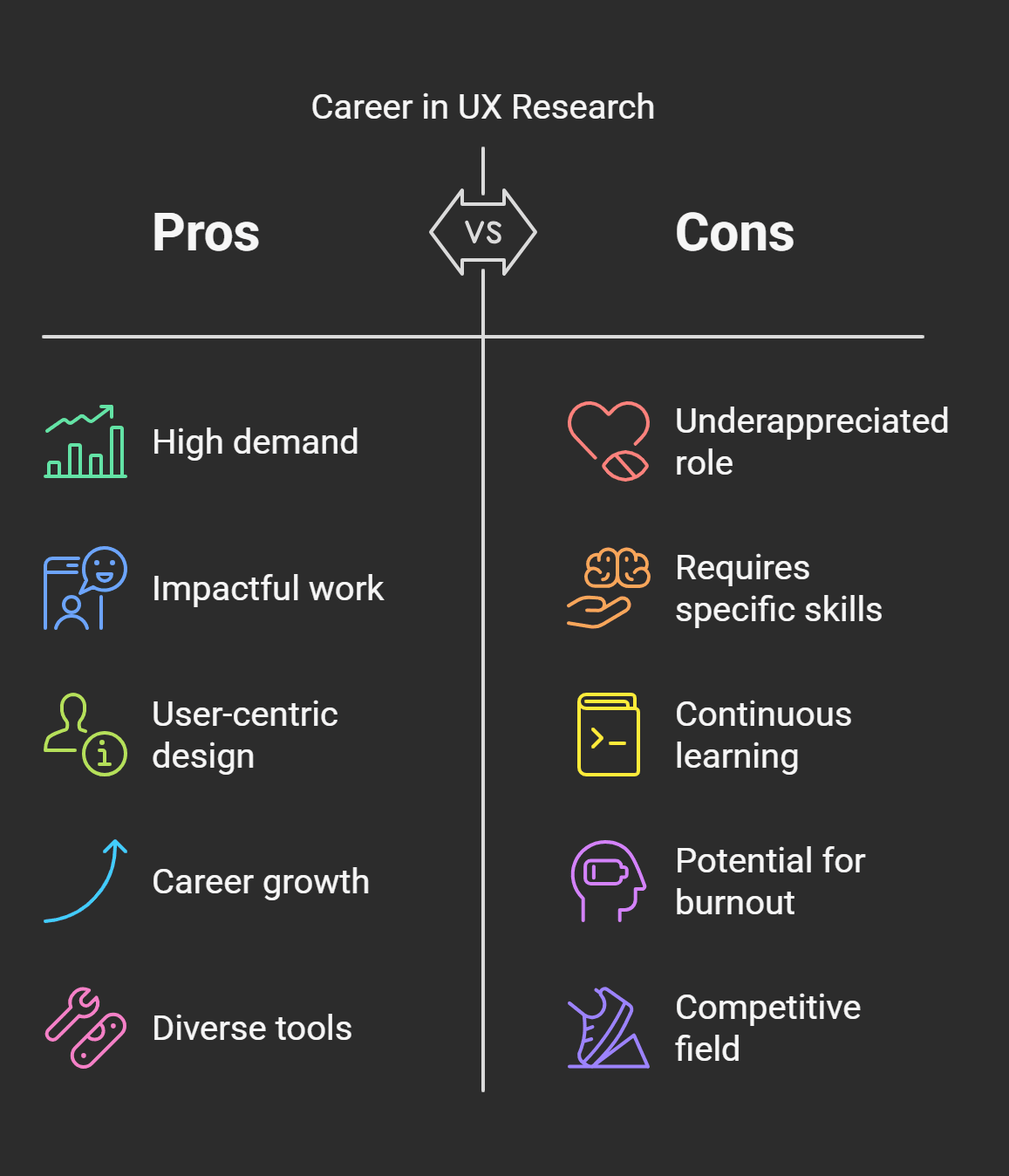
This UX Research (this is why it is Informal and why I didn’t start up with a proper definition or a blurb) probably first started when I was without a typology, let alone a Maynard Keynes graph in my head, whatever that means. I had no idea what a “UX researcher” was until someone said it at a networking event. Fast-forward a couple of years later, and here I am, enjoying every aspect of this career path while assisting companies in creating products that users want to use. If you'll see how far you can take it as a UX researcher, hang tight this is a lot to unpack.
When I began my search, I had assumed all I could do was secure an entry-level role and see where it led. But guess what? This field has so many different ways of doing it. Some people come from a psychology background (like me), others from graphic design, marketing, or even software development. The beauty of UX research is that it is a melting pot of skills from all fields. So, if you have some experience with understanding human behavior, analyzing data, or even just asking good questions, you are already halfway there.
One of the most incredible things I’ve noticed has been how pliable the career ladder is. You don't need to go straight up; you can also zig-zag. I started as a junior UX researcher for a small startup. It certainly wasn’t glamorous, but I learned a lot. We were scrappy, conducting user interviews with coffee shop patrons because we couldn’t afford expensive tools. In retrospect, those early days imparted grit and creativity to me, the dividends of which are still paying off today. From there, I started moving into more mid-level engineering roles at larger corporations, which meant more “senior UX researcher” types of titles. Believe me, “Senior” next to your name feels nice after grinding for a little while.
But here’s the kicker, not everyone follows the straight and narrow. Some UX researchers also pivot into specialized areas, such as accessibility research, which centers on making products more straightforward for persons with disabilities. Some track into behavioral analytics or become specialists in remote usability testing. And we haven’t even touched on leadership positions. A friend of mine was recently promoted to Head of UX Research at his company, managing an entire team. He quips that he spends more time in meetings than in actual research these days, but he says such is the price of climbing the corporate ladder.
As for industries, well, the world is your oyster. Tech behemoths like Google and Microsoft employ dozens of UX researchers but don’t forget about sectors like health care, finance, and education. Another of my old coworkers works for a hospital system, studying how patients interact with telehealth apps. She says this is incredibly rewarding because her work directly affects patient care. Not bad, right?
Now, here’s something that I wish someone had told me, certifications can be helpful. While not required, courses in UserTesting, Nielsen Norman Group, and other tools and platforms look positive on a resume. Plus, they prove to hiring managers that you mean business in leveling up your game.
Oh, and one final thought, do not underestimate connections. I got my second job via someone I met at a UX conference. People in this field typically are friendly and eager to give advice. So, get out, attend events, and participate in online communities. You never know who will open the next door for you.
So, a UX researcher is not just someone who gathers data but a storyteller, a problem solver, and a user advocate. Whether you want seniority, specialization, or leadership, there’s a prescription for your vibe. However, taking a long route is perfectly fine now and then. Sometimes, the best opportunities come when you least expect ‘em.
The Future of UX Research
I’ve been in this UX research game for a while now, and I’ve seen some wild changes in how we do this stuff. And the next couple of years? They’re going to be very, very big for our field. When people say “the future is now,” there can be an uncomfortable separation between those who choose to embrace it and those who refuse to acknowledge what’s coming down the pipeline and, thus, find themselves stuck with outdated methods while everyone else is out here innovating. Strap in because we will learn about the Trending UX research in 2025.
The first word is about AI. Yeah, I’m aware it seems like every other industry is jumping on the AI hype train now. But hear me out. AI is not a buzzword in UX research; it’s a big deal. Tools, for example, can analyze user behavior across platforms without spending hours juggling spreadsheets. Once, I spent three days poring over heatmaps and session recordings, trying to figure out why users were dropping off at a particular point in an app. Fast forward to today, and an AI tool could have flagged that issue in minutes. It was frustrating, sure, but you know what? That struggle reminded me to value automation even more.
Here’s the kicker, though AI doesn’t replace human intuition. Nope. It just gives us superpowers. For instance, you could feed past project data into machine learning models and predict usability issues before they occur. Sounds futuristic, right? Well, it’s happening now. The trick is knowing when to rely on tech and when to follow your instincts. Believe me; I’ve been there, relying too much on algorithms and then realizing later by talking to real users that insight was more interesting than any bot.
Accessibility and inclusive design. This leg of the work hits particularly close to home for me; a couple of years ago, I worked on a project where we completely ignored accessibility testing, and after launching the product and giving ourselves a pat on the back, we got slammed with feedback from users who couldn’t navigate the site due to poor contrast or missing alt text. I mean, right? The big lesson here is that broad inclusivity is no longer optional. Businesses will have no excuse not to prioritize accessible designs by 2025. Tools like screen readers and voice interfaces are already mainstream, and if your research doesn’t include them, you’re already lagging.
Regarding tools, remote user testing has gone from a “nice-to-have” to an absolute necessity. Remember when we had to visit users halfway across the country to ‘observe’ them interacting with a prototype? Now, with copious online platforms such as UserTesting and Lookback, not only can we observe, but we can interact with participants all over the world in real time. Honestly, it’s kind of amazing. Last year, I participated in a study with participants from five different countries, all from my couch. Managing time zones was a headache, but the value that came from gained perspectives? Worth it.
At long last, behavioral analytics is taking off. Unlike in the past, when we relied on surveys and interviews for user feedback, we monitored user behavior. Their methods of interacting with the interface, such as clicking, scrolling, and even eye-tracking, are now providing deeper insights than ever before. Diving into the data can seem daunting at times. In my research, I questioned, “Am I reading too much into this?” But once you begin identifying patterns, it presents as a jigsaw puzzle that needs piecing. You suddenly perceive why users, where users get stuck, and where they get interested.
So, yeah. These trends are no longer shaping UX research; they are defining it. From AI tools to standard global accessibility features, 2025 will be groundbreaking. As I always advise, “Stay curious, Experiment.” But remember, no matter how sophisticated technology gets, it is still primarily about understanding people. With significant technological advancements, nothing can compare to a conversation with a user.
In Brief
In essence, a user experience researcher doesn't just study users’ interaction with products, they defend the users’ interests throughout the design process and involve them with the product at every stage, from conceptual interviews to implementation. UX researchers are responsible for developing successful products and shaping them with insights from the great tools they have in the market.
If prepared for this fulfilling career path, polish your research capabilities and follow relevant industry news. Recall that wonderful experiences can never be achieved by chance; they are meticulously constructed through practical research, provided the proper attention is given to the examining scope that users will be engaging in. So why not now? Start the journey of exploring UX research.




.svg)
.svg)
.svg)
.svg)

